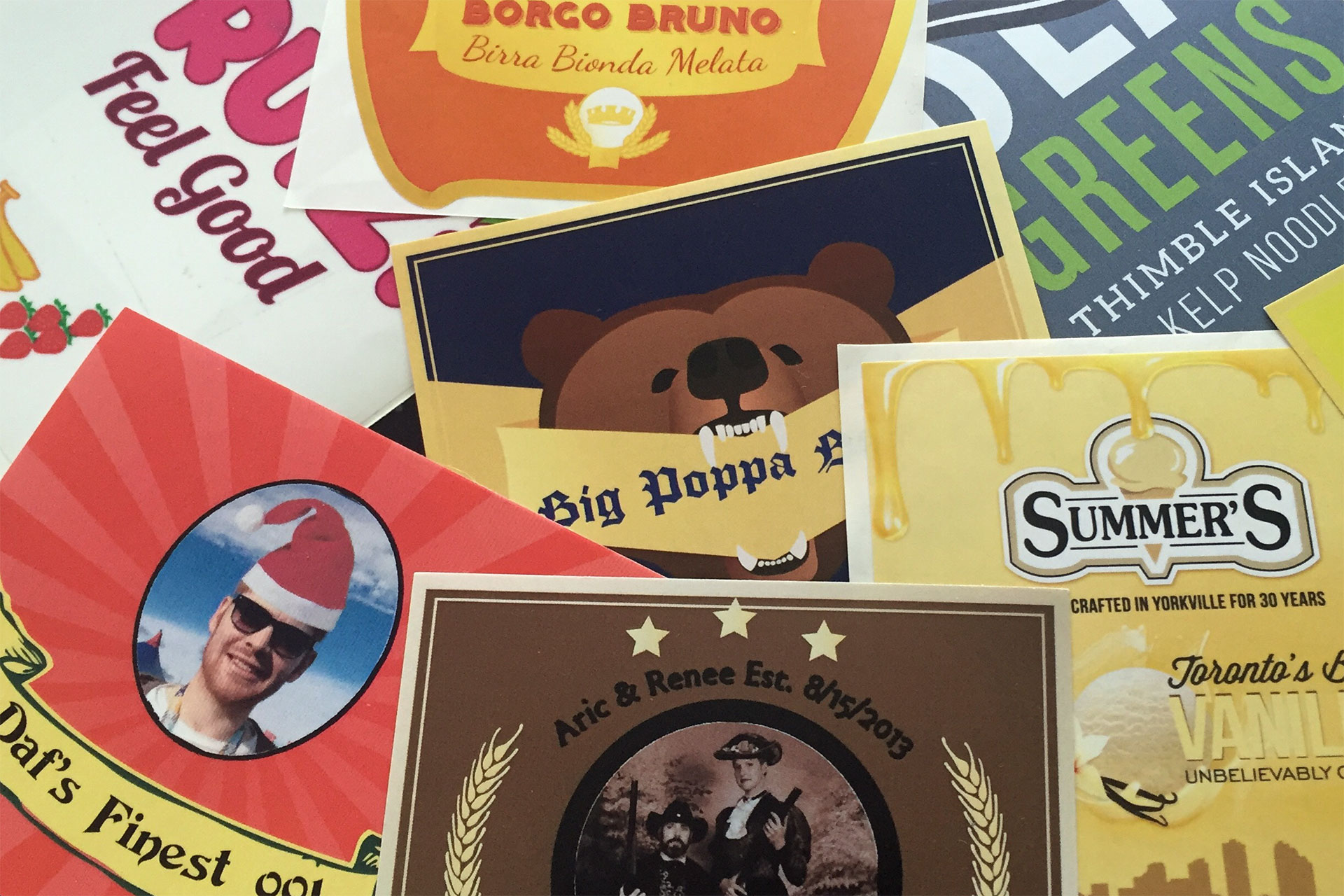We talked about the importance of visually powerful and stimulating product labels and what you need to consider in order to design labels like a pro. With the right research on the type of buyers you want to attract and with good design, you’ve laid your groundwork for successful sales. However, there’s another important element to take into account before finalizing your product: choosing the right label material. If you’re new to product labeling, you might not be aware of how critical this step can be. It might be useful to hear about some of the negative experiences of people who chose the wrong type of label stock for their application.
What Can Go Wrong with Label Stocks and Adhesives?
Product labels are applied to different types of surfaces, from irregularly shaped boxes and jars to rough and slippery materials. There is no universal label stock that can work on all these shapes and surfaces. For example, if you decide to save some money on label material and go with commonly used plain paper, you need to know that paper labels are only good for products that will be stored in moderate, non-humid conditions. If you plan to use labels on things that will be washed or exposed to humidity in some other way, chances are that the labels will peel off, the printed ink will run/smear, and the label with important information about the product will stop being useful to its users. Therefore, poorly chosen label material for your product can be a good enough reason for buyers to stop purchasing your product.
Vinyl and polyester labels are sturdy and are commonly used for waterproof labels, but it’s also important to know when not to use them. If you need labels for cosmetic products, software equipment, non-washable toys, etc. there is no need to spend more money on expensive polyester because quality coated paper will do just fine.
How to Determine Which Label Material to Use with Labeley
If you’ve already used Labeley and needed to print designs using our professional printing services, you know that Labeley offers 9 different types of label stock. They pretty much cover all the products and situations that require product labeling. If you’re having doubts which of the 9 materials to choose, here’s a brief explanation for each:
1) Plain paper, no gloss. This is a very common label material that people often choose for all types of household labels, including stickers for kids school equipment (books, notebooks, pencil cases, etc.). It’s not very durable and it has a plain matte look, so it’s not recommended for products that need a high-end look or products with challenging storage conditions.
2) Plain paper, semi-gloss. There is a slight difference between this and the previously explained label stock, and you can see it in its title. It is not a completely matte material, but does have some gloss to it.
3) Plain paper, glossy. This is the final paper stock variation and it can be used for commercial products because of its glossy, more elegant appearance. The gloss also gives some added protection to the label, so these types of paper labels can also be used for more demanding conditions (freezers, etc.)
4) Clear vinyl plastic. As we previously mentioned, vinyl is a more sturdy type of label stock often used for products that are exposed to water/humidity. Clear labels are commonly used for products that need to give off a classy, elegant look. They are ideal for wine labels.
5) Indoor vinyl plastic. Similarly to clear vinyl, this material is often used for waterproof applications. It is not clear but matte, so the choice here comes down to the stylistic preference between clear and matte look.
6) Outdoor vinyl. This is the third variation of the vinyl material that Labeley suppliers offer and the difference between this one and the other two is in its glossy quality, which gives this material even more durability.
7) Freezer grade paper. This glossy paper material can be used for beer bottles that are kept on ice rocks or for different types of frozen food packaging.
8) Freezer grade vinyl is a glossy vinyl material, a bit more durable than freezer grade paper, so users who want to make sure that their label performs perfectly should pay a bit more money for the reliable vinyl.
9) Kids grade material is a specialty Scotchcal white material that is used for kids products such as kids clothes, shoes, baby bottles and more. It is durable, waterproof, microwavable, dishwasher-safe and BPA free.
Since the cost of materials is, naturally, of great interest to users, it is useful to know that the more durable labels are, the more expensive they are. Among these 9 label materials provided by Labeley, kids grade material is the most expensive, followed by glossy vinyl, while plain paper (no-gloss) is the most affordable. However, price should not dictate your choice, because the goal is to have customers that return. So, make sure you study your product packaging well and wisely determine which label stock would be the best fit.



This article is really cool. I have bookmarked it.
Do you allow guest posting on your website ?
I can write high quality posts for you. Let me know.
Hi Humberto, thanks for your feedback- I’m glad you liked the article. I’m afraid we are not accepting guest posts at the moment. We’ll let you know if we change this policy in the future.